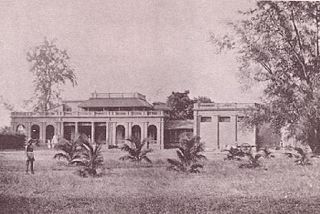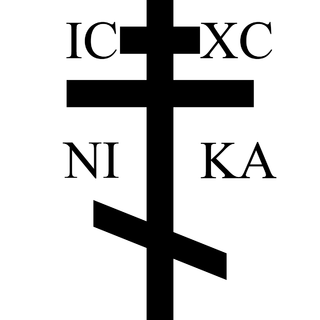Related Research Articles


The Theosophical Society is the organisational body of Theosophy, an esoteric new religious movement. It was founded in New York City, US in 1875. Among its founders were Helena Blavatsky, a Ukrainian mystic and the principal thinker of the Theosophy movement, and Henry Steel Olcott, its first president. It draws upon a wide array of influences among them older European philosophies and movements such as Neoplatonism and occultism, as well as parts of Asian religious traditions such as Hinduism, Buddhism, and Islam.

Annie Besant was a British socialist, theosophist, freemason, women's rights and Home Rule activist, educationist, and campaigner for Indian nationalism. She was an ardent supporter of both Irish and Indian self-rule.

Charles Webster Leadbeater was a member of the Theosophical Society, Co-Freemasonry, an author on occult subjects, and the co-initiator, with J. I. Wedgwood, of the Liberal Catholic Church.

The Theosophical Society (Pasadena) is a branch of Theosophy based in Pasadena, California. It claims to be the successor organization to the original Theosophical Society founded by Helena Petrovna Blavatsky and others in 1875 in New York City. Currently is the second largest Theosophical group in members and international reach after the Theosophical Society Adyar.

The United Lodge of Theosophists or ULT is an informal and wholly voluntary association of students of Theosophy. It was founded in 1909, mainly through the efforts of Robert Crosbie. The first parent lodge of the ULT was started in Los Angeles by Robert Crosbie and seven other associates through the adoption of its Declaration on February 18, 1909. Owing largely to the revival efforts of B.P. Wadia after Crosbie's death, there are currently about twenty active lodges spread all over the world. The ULT is considered to be part of the second generation or the third section of the Theosophical Movement started in 1875 by H.P. Blavatsky in New York. Presently, it is also one of the existing four main "branches" of the original Theosophical Movement. The following founding principles when taken as a whole, sets apart the ULT from the other Theosophical Organizations:

The Theosophical Society in America (TSA) is a member-based nonprofit organization dedicated to the teaching of Theosophy and affiliated with the international Theosophical Society based in Adyar, Chennai, India. The name "Theosophical Society in America" was legally adopted by the American Theosophical Society in 1934. Previously, other organizations had used the same name during the years 1895–98 and 1898–1908.

Morya, also spelt Maurya, is one of the "Masters of the Ancient Wisdom" within modern Theosophical beliefs. He is believed to be one of the Mahatmas who inspired the founding of the Theosophical Society and was engaged in a correspondence with two English Theosophists living in India, A. P. Sinnett and A. O. Hume. The correspondence was published in 1923 by A. Trevor Barker, in the book The Mahatma Letters to A. P. Sinnett.
Francesca Arundale was an English theosophist and freemason.

The Theosophical Society in America (Hargrove branch) was an organization that developed from the Theosophical Society in America.

Report of the committee appointed to investigate phenomena connected with the Theosophical Society, commonly called the Hodgson Report was an 1885 report by the Society for Psychical Research (SPR) on Helena Blavatsky and purportedly apported Mahatma Letters.

Theosophical teachings have borrowed some concepts and terms from Buddhism. Some theosophists like Helena Blavatsky, Helena Roerich and Henry Steel Olcott also became Buddhists. Henry Steel Olcott helped shape the design of the Buddhist flag. Tibetan Buddhism was popularised in the West at first mainly by Theosophists including Evans-Wentz and Alexandra David-Neel.

Constance Georgina Louise Wachtmeister, known as Countess Wachtmeister, was a prominent theosophist, a close friend of Helena Blavatsky.

In Theosophy, Maitreya or Lord Maitreya is an advanced spiritual entity and high-ranking member of a reputed hidden spiritual hierarchy, the Masters of the Ancient Wisdom. According to Theosophical doctrine, one of the hierarchy's functions is to oversee the evolution of humankind; in concert with this function Maitreya is said to hold the "Office of the World Teacher". Theosophical texts posit that the purpose of this Office is to facilitate the transfer of knowledge about the true constitution and workings of Existence to humankind. Humanity is thereby assisted on its presumed cyclical, but ever progressive, evolutionary path. Reputedly, one way the knowledge transfer is accomplished is by Maitreya occasionally manifesting or incarnating in the physical realm; the manifested entity then assumes the role of World Teacher of Humankind.

Man: Whence, How and Whither, A Record of Clairvoyant Investigation, published in 1913, is a theosophical book compiled by the second president of the Theosophical Society (TS) - Adyar, Annie Besant, and by a TS member, Charles W. Leadbeater. The book is a study on early times on planetary chains, beginnings of early root races, early civilizations and empires, and past lives of men.

Theosophy is a religion established in the United States during the late 19th century. It was founded primarily by the Russian Helena Blavatsky and draws its teachings predominantly from Blavatsky's writings. Categorized by scholars of religion as both a new religious movement and as part of the occultist stream of Western esotericism, it draws upon both older European philosophies such as Neoplatonism and Indian originated religions such as Hinduism and Buddhism.

Christianity and Theosophy, for more than a hundred years, have had a "complex and sometimes troubled" relationship. The Christian faith was the native religion of the great majority of Western Theosophists, but many came to Theosophy through a process of opposition to Christianity. According to professor Robert S. Ellwood, "the whole matter has been a divisive issue within Theosophy."
New India was an early 20th century daily newspaper published in India by Annie Besant, to highlight issues related to the Indian freedom struggle.

Hinduism is regarded by modern Theosophy as one of the main sources of "esoteric wisdom" of the East. The Theosophical Society was created in a hope that Asian philosophical-religious ideas "could be integrated into a grand religious synthesis." Prof. Antoine Faivre wrote that "by its content and its inspiration" the Theosophical Society is greatly dependent on Eastern traditions, "especially Hindu; in this, it well reflects the cultural climate in which it was born." A Russian Indologist Alexander Senkevich noted that the concept of Helena Blavatsky's Theosophy was based on Hinduism. According to Encyclopedia of Hinduism, "Theosophy is basically a Western esoteric teaching, but it resonated with Hinduism at a variety of points."
Josephine Maria Ransom, née Davies (1879-1960) was an Australian Theosophist and writer. She served as General Secretary of three different national sections of the Theosophical Society, and wrote A Short History of the Theosophical Society. Ransom was also Honorary Secretary of the Britain and India Association, and editor of its magazine Britain and India.
References
- ↑ Charles Freer Andrews (Hrsg.): Mahatma Gandhi, Mein Leben. Suhrkamp, Frankfurt a.M. 1983, ISBN 3-518-37453-2. Seite 48f.